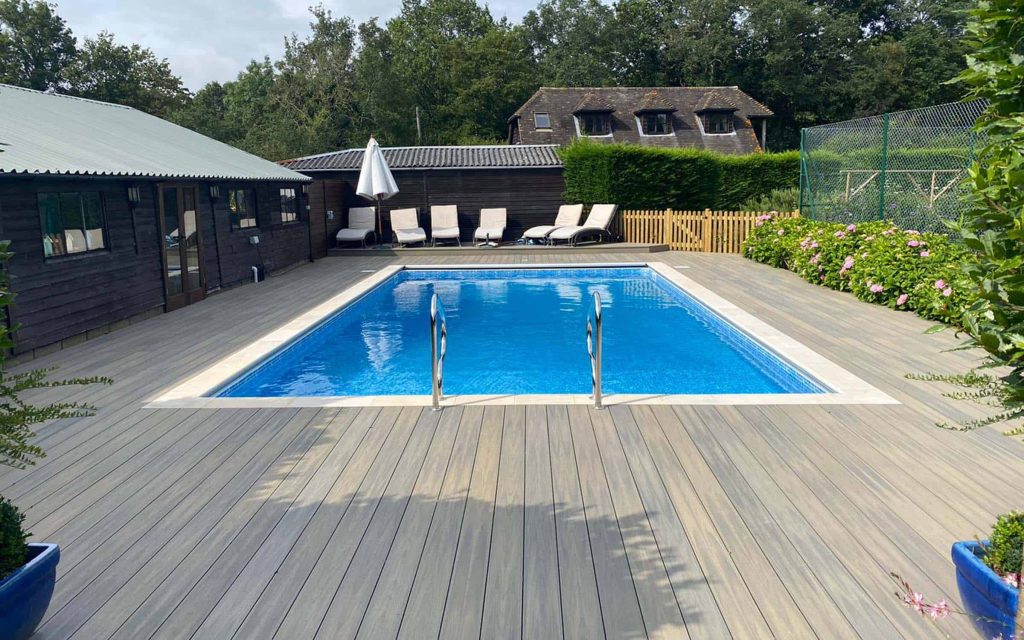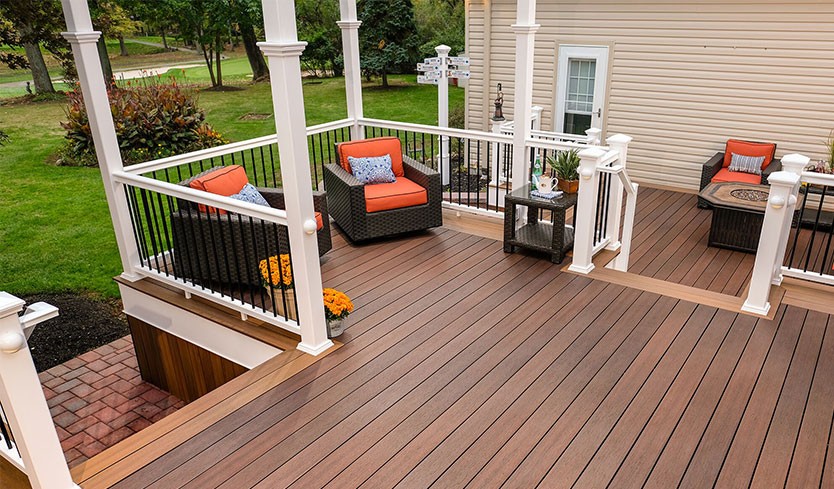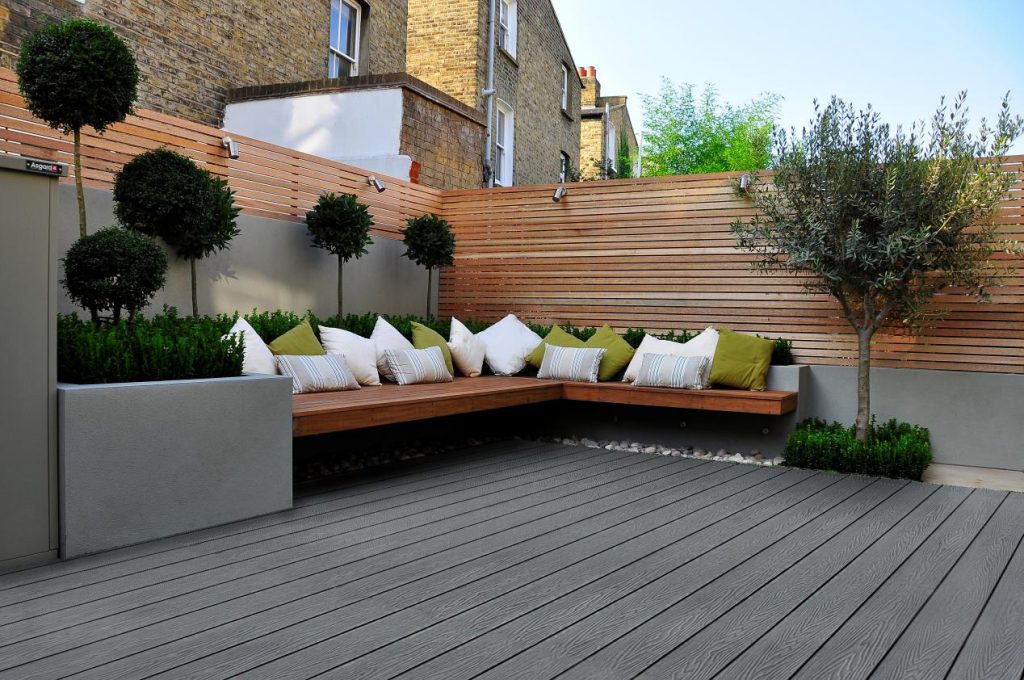When it comes to creating a beautiful and functional outdoor oasis, few elements have as much impact as the pool decking. Composite decking around inground pool installations has emerged as a leading trend in modern landscaping, offering homeowners a sleek, low-maintenance, and highly durable alternative to traditional wood, concrete, or stone. If you’re planning to upgrade or build a new pool deck, this comprehensive guide will walk you through everything you need to know about using composite decking around your inground pool.
Ecoscape UK and Similar Brands
Table of Contents
Why Choose Composite Decking Around Inground Pool?
Choosing the right decking material for your inground pool is a crucial decision. Traditional wood can warp or splinter over time, concrete can crack, and tiles can become slippery. Composite decking, however, addresses most of these pain points and introduces a range of benefits:
1. Water Resistance
Composite materials are made from a mixture of plastic and wood fibers, which makes them highly resistant to water. This is a major advantage for poolside environments where surfaces are constantly exposed to moisture.
2. Slip Resistance
Many composite decking boards come with textured surfaces or grooved finishes that provide excellent traction, even when wet—ideal for families with kids or elderly relatives.
3. Low Maintenance
Forget about staining, sealing, or sanding. Unlike wood, composite decking around inground pool areas only needs occasional cleaning with soap and water to stay looking pristine.
4. UV and Fade Resistance
Sun exposure can cause wood decking to fade and crack. High-quality composite boards are UV resistant, maintaining their rich colors even under direct sunlight.
5. Aesthetic Appeal
From natural wood tones to modern greys and sleek blacks, composite decking offers a broad palette of colors and finishes that can match any backyard design.
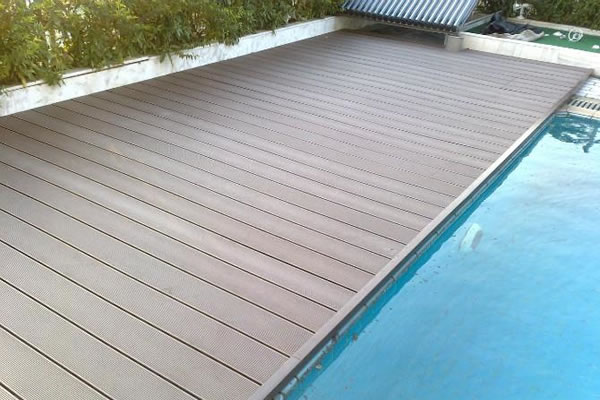
Top Benefits of Installing Composite Decking Around Inground Pool
1. Safety First
Pool safety is paramount. Composite decking provides a stable and splinter-free surface for bare feet. Many boards are also heat resistant, meaning they stay cooler underfoot compared to traditional wood or concrete.
2. Sustainability
Most composite decking products are made from recycled materials, including plastic bags and reclaimed wood fibers, making them an eco-friendly option.
3. Cost-Effective Over Time
Although the upfront cost of composite decking around inground pool installations may be higher than wood, the long-term savings on maintenance, repairs, and replacements make it a smart investment.
4. Customization and Flexibility
Composite decking boards are easy to cut and install. They can be used to create curves, multi-level platforms, benches, planters, and other unique design elements.

Popular Types of Composite Decking for Inground Pools
When selecting composite decking for inground pools, it’s essential to understand the available material types and configurations, as each comes with its own set of benefits and ideal use cases. Here’s a deeper dive into the most commonly used varieties:
1. Capped vs Uncapped Composite Decking
Capped Composite Decking: This type features a high-performance protective shell—usually made of polymer or PVC—wrapped around the core of the board. The cap layer offers enhanced resistance to moisture, mold, mildew, scratches, and UV rays. It’s ideal for pool environments because it prevents water intrusion, reduces the risk of fading, and significantly improves durability. Many premium lines also include fade and stain warranties lasting up to 50 years.
Uncapped Composite Decking: The original form of composite decking, these boards lack the outer protective shell, making them more affordable. However, they are more prone to staining, fading, and moisture absorption over time. While still a good option for budget-conscious homeowners, uncapped boards require more maintenance and are less ideal for wet, poolside settings.
2. Grooved vs Solid Boards
Grooved Boards: Designed with side slots to accommodate hidden fastener systems, grooved boards are perfect for creating a clean, nail-free surface around the pool. These fasteners not only enhance the visual appeal but also minimize the risk of stubbed toes or tripping. Grooved boards are ideal for large, open decking layouts where aesthetics and safety are top priorities.
Solid Boards: These boards have a full, flat profile and are often used for perimeter framing (picture framing) or stair edges, where a finished edge is desired. They offer more structural integrity than grooved boards and can be face-screwed for applications requiring stronger fastening, such as curved deck designs or elevated platforms near the pool.
3. PVC vs Wood-Plastic Composite (WPC)
PVC Decking: Made entirely from plastic (usually polyvinyl chloride), PVC boards are extremely resistant to moisture, mold, and mildew. They tend to stay cooler underfoot, which is a significant benefit in sunny pool areas. Additionally, PVC decking is lightweight, easy to handle, and highly resistant to warping or expansion from moisture. The downside is that it may lack the natural wood grain aesthetics some homeowners prefer.
Wood-Plastic Composite (WPC) Decking: This popular hybrid option combines recycled wood fibers with thermoplastic materials, delivering the best of both worlds—natural wood appearance with enhanced durability. WPC decking mimics the texture and look of real timber, making it a favorite for homeowners who want both functionality and visual warmth. With capped WPC variants, you also gain added protection, making them a strong contender for poolside applications.
When choosing among these options, consider your climate, usage patterns, design preferences, and maintenance expectations. High-moisture and high-traffic pool areas benefit greatly from capped WPC or PVC decking, while budget installations may opt for uncapped composite or a mix of board types for different zones.
Design Ideas for Composite Decking Around Inground Pool
A thoughtfully designed deck can transform your pool area from basic to breathtaking. Here are a few design ideas to inspire your project:
1. Wraparound Pool Deck
Create a uniform space by surrounding the entire pool with composite decking, giving it a clean and cohesive look.
2. Multi-Level Decking
Use composite materials to build elevated lounging areas or integrated seating spaces around the pool for sunbathing and relaxing.
3. Built-in Planters and Benches
Take advantage of composite decking’s versatility to incorporate planters, benches, or even outdoor kitchens into your poolside layout.
4. Lighting Integration
Add LED lighting into the grooves or beneath steps to improve nighttime visibility and elevate ambiance.
5. Contrast Borders
Use contrasting board colors to frame the pool, creating visual interest and improved spatial definition.

How to Install Composite Decking Around Inground Pool
Installing composite decking around inground pool areas follows a specific process. Here’s a basic overview:
1. Planning & Layout
Measure the pool perimeter, decide on the decking pattern, and plan for features like stairs or furniture zones.
2. Framing
Use pressure-treated lumber or metal framing specifically rated for ground contact and moisture exposure.
3. Joist Spacing
Most composite decking requires joists spaced at 12″–16″ apart, but always follow the manufacturer’s guidelines.
4. Decking Installation
Use hidden fasteners or stainless-steel screws to attach the boards. Leave appropriate expansion gaps, especially in high-heat areas.
5. Trimming & Finishing
Install fascia boards, corner trims, and other edge detailing to give the deck a polished look.
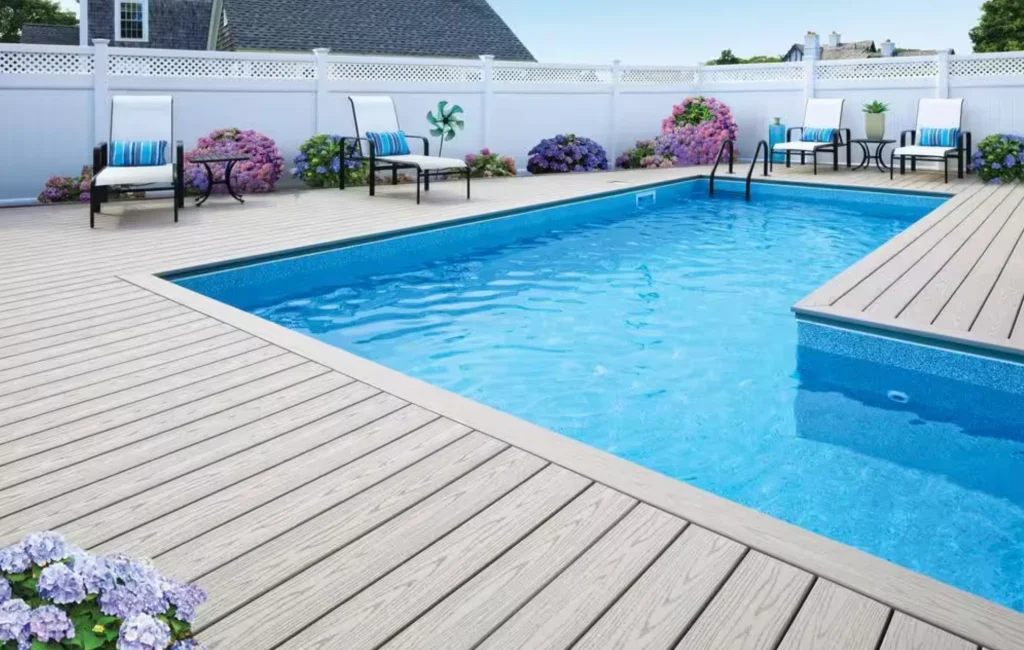
Maintenance Tips for Composite Decking Around Inground Pool
Although composite decking is low-maintenance, proper care ensures it looks and performs its best:
Regular Cleaning: Hose down the deck weekly to remove dust and debris. Use mild soap and a soft brush for stains.
Avoid Harsh Chemicals: Stay away from bleach or petroleum-based cleaners that could damage the surface.
Check Fasteners: Periodically inspect screws and hidden fasteners to ensure everything remains secure.
Clear Pool Chemicals: Rinse off any pool chemicals that might spill onto the decking.
Common Mistakes to Avoid
Even though composite decking around inground pool areas is user-friendly, mistakes can be costly. Here are a few to watch out for:
Ignoring Drainage: Proper water runoff design prevents moisture buildup and extends deck life.
Incorrect Joist Spacing: Failing to meet spacing requirements can lead to sagging or board failure.
Skipping Permits: Some jurisdictions require permits for deck installations—check local codes.
Mixing Brands: Different brands may have varying color tones or thicknesses, so avoid mixing them unless intentionally designed.
Choosing the Right Composite Decking Brand for Poolside Applications
Selecting a reliable composite decking brand is a crucial step when planning your poolside renovation. Not all composite decking products are created equal, especially when it comes to withstanding the unique challenges of an inground pool environment—constant moisture exposure, UV radiation, pool chemicals, and frequent foot traffic.
Key Factors to Consider When Evaluating Brands:
Moisture and Mold Resistance
For poolside areas, it’s vital to choose decking boards that offer superior resistance to water penetration and mold growth. High-quality composite decking often includes a protective cap layer that prevents moisture from seeping in, helping to maintain structural integrity and aesthetics over time.UV and Fade Resistance
The deck will be exposed to direct sunlight for long hours. Ensure the material is UV-stabilized and rated for fade resistance. Some premium products include fade and stain warranties that guarantee long-term color retention even under intense sun exposure.Slip Resistance
Look for decking with textured surfaces or grooved patterns that enhance grip and reduce the risk of slipping when the deck is wet. This is especially important for families with children or elderly members using the pool area.Thermal Properties
Decking material that stays cool underfoot can significantly enhance comfort, especially in sunny regions. Some boards are specially engineered to reflect heat or incorporate cooler surface technology.Aesthetic Variety
The best brands offer a wide range of color tones, grain patterns, and board profiles to match various design themes—be it modern, rustic, or tropical. Opt for a brand that gives you creative flexibility.Sustainability and Eco-Friendliness
If environmental impact is a concern, consider brands that manufacture decking using recycled materials and eco-friendly production practices.Warranty and Support
A reliable manufacturer should offer strong warranties and transparent customer support. Look for products backed by at least a 25-year warranty, covering issues like structural defects, fading, and staining.
A Reliable Option: Hosung® Composite Decking
Among the many available options, Hosung® is recognized for producing WPC decking that performs exceptionally well in high-moisture environments, making it an excellent fit for inground pool applications. Their products are manufactured using a carefully balanced blend of recycled wood fibers and high-density polyethylene, which results in a durable, eco-conscious, and visually appealing decking solution. With a focus on water resistance, anti-slip surfaces, and dimensional stability, Hosung’s composite decking is designed to withstand the demanding conditions around pools while offering easy maintenance and long-term value.
Whether you’re a homeowner, landscape designer, or contractor, choosing a decking supplier like Hosung that prioritizes performance, durability, and safety can make all the difference in your poolside project’s success.
Frequently Asked Questions (FAQ)
1. Is composite decking hot underfoot near a pool?
High-quality composite decking with light colors and textured surfaces tends to stay cooler. PVC decking is also cooler than WPC.
2. Can composite decking get slippery when wet?
While it can be slippery, especially if algae or sunscreen build up, many composite boards are textured to reduce slip risk.
3. Does chlorine damage composite decking?
Most capped composite decking is chlorine-resistant, but it’s a good practice to rinse off chemical spills.
4. How long does composite decking last?
Most composite decks come with warranties of 25–50 years. With proper care, they can last even longer.
5. Is composite decking worth the cost around a pool?
Yes, due to its durability, low maintenance, safety, and visual appeal, the long-term value outweighs the initial cost.
Final Thoughts
If you’re designing your dream outdoor space, composite decking around inground pool areas is a smart, stylish, and sustainable solution. It combines the natural beauty of wood with modern innovation, offering everything homeowners need—durability, safety, and aesthetics.
Whether you’re going for a tropical resort vibe, a modern minimalist escape, or a rustic backyard retreat, composite decking offers the flexibility and performance required to make your vision come to life. And with the right design, installation, and care, your poolside space will remain a highlight of your home for years to come.
Ready to elevate your inground pool with composite decking? Explore top-rated materials, compare suppliers, and start designing the outdoor sanctuary you’ve always dreamed of. Welcome to feel free to Get more about Hosung WPC!

